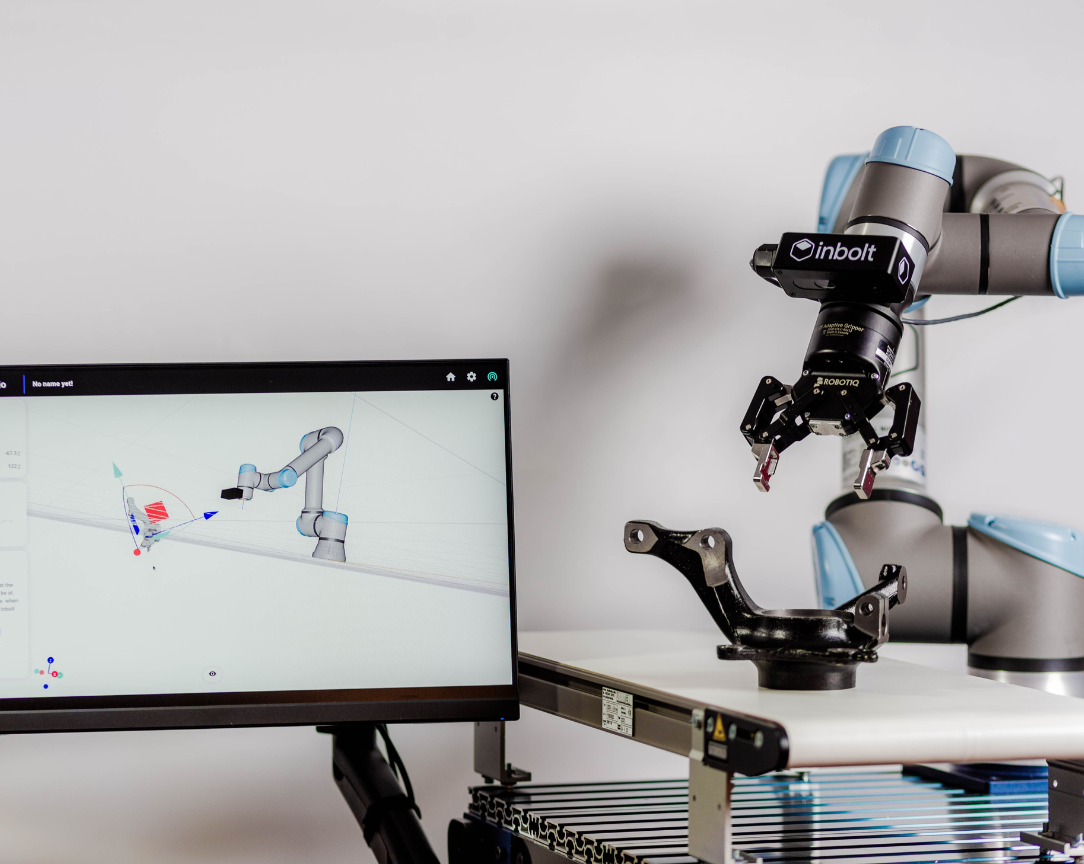Trends in Automation and Robotics: An Industry Overview
The past few years have certainly seen some interesting development in the field of tech. Today, we are diving in four of the emerging trends we see developing or continuing their emergence in 2024. Let’s delve into the trends that are shaping the future of robotics and automation.
The past few years have certainly seen some interesting development in the field of tech. Today, we are diving in four of the emerging trends we see developing or continuing their emergence in 2024. Let’s delve into the trends that are shaping the future of robotics and automation.
Trend #1 Cobots
Cobots have been a game-changer in the robotics industry. Unlike traditional robots, cobots are lightweight, flexible, cheaper and easier to use than traditional robots, making them ideal for companies looking for a first foray into automation. Cobots are also easy to implement and program, requiring minimal training for operators.
Cobots have opened up automation opportunities due to their wider range of applications: they can handle precise assembly line tasks, check outputs' quality, lift, move, and grasp heavy objects, among other things.
And most importantly perhaps, cobots enable blended working between humans and robots, which so far has led to increased productivity, reduced labor costs, and improved worker safety.
Their popularity will only continue to grow in the coming years.
Trend #2 RaaS

Robotics-as-a-service (RaaS) offers numerous advantages, especially when compared to traditional methods of robotics implementation, and has the wind in its sail.
Particularly, one significant edge of RaaS is that it provides businesses with the ability to utilize robotic process automation without having to purchase equipment outright (which tends to be the general set back for most SMBs who cannot afford it). This lowers the cost of entry, making it a more viable solution SMBs. By leasing robotic devices through a cloud-based subscription service, businesses have the ability to pay-as-you-go, and only pay for what they consume. This elastic consumption allows for scalability, making it useful for seasonal spikes or e-commerce situations where it's challenging to predict warehouse throughput requirements in the long-term.
That being said, there are some limitations to the process. RaaS cannot have a full robot hardware customization, since it is a lease and not a purchase. As such these robots will generally have limited tasks and may not always meet the specific needs of the business. That, and the fact that capital investment and depreciation are not an option. Since businesses don't own the equipment, they cannot depreciate it as a capital asset over its working life.
However, RaaS is a really good options for companies looking to test out automation for their needs and experiment with it before committing to the full adventure.
Trend #3 Investment in Tech

As we move into 2024, green technologies (notably green hydrogen and nuclear fusion) are set to continue their development, as well as AI (predicted to grow by 12% in 2023, accelerating other emerging technologies such as robotics and IoT) and robotics (expected to grow at a CAGR of 29% to $568bn by 2030, with autonomous delivery robots, commercial drone delivery, and warehouse robots becoming increasingly prevalent).
Indeed, since the Covid-19 crisis, the world’s reliance on technology has lost none of its momentum, and a number of industries need technology solutions that facilitate the widespread exchange of data, creating opportunities for public and private investing and M&A.
Trend #4 Ageing Population and Automation

The combination of an ageing population and the rise of automation is having a profound impact on the global economy. With many countries experiencing a worker shortage, robots are increasingly being used to fill the gaps left by retiring workers.
According to a study by MIT, robots are more widely adopted in places where the population is ageing at a faster rate, and this trend is set to continue. Estimates suggest that automation could raise global productivity growth by up to 1.4%annually, adding up to considerable gains.
As countries battle a shortage of middle-aged workers in skilled manual jobs, they are turning to robots to automate manual tasks, such as industrial inspection, and the trend is expected to accelerate in the coming years.
The Wrap Up
Of course, these are only a few of the trends that have been picked up on in the recent months. Some other involve the rise of AI, notably with the resounding arrival of ChatGPT last november, as well as the healthcare industry’s rapid turn to automation and its increase of service robots as a whole.
Overall, these trends really underscore the importance of staying up-to-date on the latest advancements in robotics and automation. Companies that embrace these improvements will have a competitive edge over those that do not, as they will be better equipped to meet the demands of an ever-evolving market. By keeping a close eye on these trends and adapting to changes as they occur, businesses can position themselves for success both now and in the future.
Are there any other trends you see emerging in 2024?
Last news & events about inbolt

Articles
Sim2Real Gap: Why Machine Learning Hasn’t Solved Robotics Yet
The most successful areas of application for deep learning so far have been Computer Vision (CV), where it all started, and more recently, Natural Language Processing (NLP). While research in Robotics is more active than ever, the translation from research to real-world applications is still a promise, not a reality. But why?

Articles
Exploring the potential of LLMs in robotics: an interview with Louis Dumas
Robotics has always been at the forefront of technological advancement, but translating human ideas into robotic actions remains one of its greatest challenges. In an interview with Louis Dumas, co-founder and CTO of inbolt, he shared his insights into the transformative potential and current limitations of Large Language Models (LLMs) in the robotics field.
